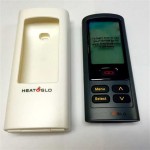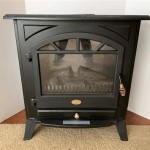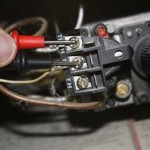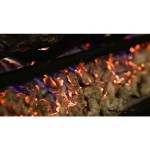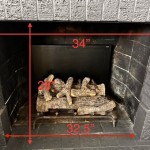```html
Efficient Electric Fireplace Heaters: A Comprehensive Guide
Electric fireplace heaters have become increasingly popular as a supplementary heating option for homes, offering a blend of aesthetic appeal and functional warmth. These appliances provide a convenient and often more energy-efficient alternative to traditional wood-burning fireplaces or gas-powered heaters in select situations. Understanding the key factors that contribute to the efficiency of electric fireplace heaters is crucial for making informed purchasing decisions and optimizing their use for cost-effective heating.
The efficiency of an electric fireplace heater, like all electric resistance heating devices, is fundamentally 100%. This means that all the electrical energy consumed is converted into heat. However, this isn't the complete picture of efficiency. The perceived efficiency relates to how effectively that heat is distributed and utilized to warm a room, offsetting the need for reliance on a central heating system. Factors such as the heater's design, heating method, insulation of the room, and user habits significantly impact the perceived and practical efficiency.
Understanding Heating Technologies
Electric fireplace heaters employ different heating technologies, each with varying characteristics regarding heating speed, heat distribution, and energy consumption. The two most common technologies are:
1. Resistance Heating: This is the most prevalent type. Resistance heaters use a metal coil or element that heats up when electricity passes through it. A fan then blows air across the heated element, distributing the warm air into the room. While efficient in converting electricity to heat, resistance heating can sometimes result in uneven heating, with the area closest to the heater becoming warmer than other parts of the room. These types are often more affordable to purchase initially.
2. Infrared Heating: Infrared heaters utilize infrared radiation to heat objects and people directly, rather than heating the air. This is a more targeted approach that can result in a quicker feeling of warmth, making it suitable for spaces where only localized heating is needed. Infrared heaters are also less likely to dry out the air compared to resistance heaters. Quartz infrared heaters and mica thermic heaters are common variations within this category. Some consider the heat provided from infrared heating to feel more natural and comfortable.
The choice between these technologies depends on the specific needs and preferences of the user. Resistance heaters are generally more versatile for heating larger areas, while infrared heaters excel at providing concentrated warmth to specific zones.
Key Features Influencing Efficiency
Beyond the core heating technology, several features influence the efficiency and effectiveness of electric fireplace heaters:
1. Thermostat Control: A precise thermostat is crucial for maintaining a consistent and comfortable room temperature. A thermostat allows the heater to cycle on and off as needed, preventing overheating and minimizing energy waste. Programmable thermostats offer even greater control, enabling users to set different temperature schedules for different times of the day, further optimizing energy consumption.
2. Fan Operation: The effectiveness of an electric fireplace heater often relies heavily on the fan that distributes the heat. A well-designed fan can ensure that the warm air is circulated evenly throughout the room, preventing hot spots and maximizing the heating coverage. Look for models with adjustable fan speeds, which allows users to customize airflow based on their preferences and the size of the room. Quiet fan operation is also a desirable feature, especially for bedrooms or living rooms where noise levels are a concern.
3. Zone Heating Capability: Electric fireplace heaters are particularly well-suited for zone heating, which involves heating only the rooms that are in use, rather than heating the entire house. This can result in significant energy savings compared to relying solely on a central heating system. By strategically placing electric fireplace heaters in frequently occupied rooms, homeowners can reduce their overall heating costs without sacrificing comfort.
4. Flame Effect Technology: The visual appeal of an electric fireplace is a major draw for many consumers. Modern electric fireplaces employ advanced flame effect technology to create realistic and mesmerizing displays. While the flame effect itself does not contribute to the heating performance, it does enhance the overall ambiance of the room. Different models incorporate various flame effect technologies, such as LED lighting, holographic projections, or spinning reflectors, each offering a unique visual experience. Some models allow independent control of the flame effect and the heating function, providing flexibility to enjoy the visual appeal of the fireplace even when heat is not needed.
5. Remote Control: A remote control adds convenience by allowing users to adjust the temperature, fan speed, and flame effect from a distance. This is particularly useful for controlling the heater from a comfortable seating position or from across the room. Remote controls often include timer functions, allowing users to set the heater to turn on or off automatically at pre-determined times.
Optimizing Usage for Maximum Efficiency
Even the most efficient electric fireplace heater will underperform if not used correctly. Optimizing usage habits can significantly improve the appliance's perceived efficiency and reduce overall energy consumption.
1. Room Insulation: The level of insulation in the room has a direct impact on the amount of heat required to maintain a comfortable temperature. Well-insulated rooms retain heat more effectively, reducing the need for the heater to run continuously. Insulating walls, ceilings, and floors, and sealing any air leaks around windows and doors, can significantly improve the overall energy efficiency of the room.
2. Proper Placement: The placement of the electric fireplace heater within the room can also affect its heating performance. Placing the heater in a central location allows for more even heat distribution. Avoid placing the heater near objects that could obstruct airflow, such as furniture or curtains. In smaller rooms, angling the heater towards the seating area can provide more direct and targeted warmth.
3. Regular Maintenance: Keeping the electric fireplace heater clean and well-maintained is essential for optimal performance. Regularly dust the exterior of the heater and clean the fan blades to ensure proper airflow. Refer to the manufacturer's instructions for specific maintenance recommendations. Some models may require periodic filter replacement or other maintenance tasks.
4. Supplement, Don't Replace: Electric fireplaces are typically designed to supplement existing heating systems, not to replace them entirely. Relying solely on an electric fireplace heater to heat an entire house, especially during extremely cold weather, may not be cost-effective or practical. Instead, use the electric fireplace heater to provide supplemental warmth to frequently occupied rooms, while relying on the central heating system to maintain a minimum temperature throughout the house.
5. Energy Audits: Consider conducting a home energy audit to identify areas where energy efficiency can be improved. An energy audit can reveal issues such as inadequate insulation, air leaks, or inefficient appliances that are contributing to higher energy bills. Addressing these issues can significantly reduce overall energy consumption and improve the effectiveness of the electric fireplace heater.
In summary, the "efficiency" of an electric fireplace heater isn't simply about electrical conversion, but a combination of heating technology, features, user habits, and the characteristics of the space being heated. By understanding these factors, homeowners can make informed choices and optimize their usage to enjoy the warmth and ambiance of an electric fireplace heater while minimizing energy consumption and costs.
```The 6 Best Electric Fireplace Heaters Of 2024

Are Electric Fireplaces Energy Efficient We Love Fire

The Best Electric Fireplaces In 2024 Popular Science

Lifeplus Small Electric Fireplace Heater Tabletop 13 5 Energy Efficient Indoor Space Portable Wood Cabinet 3d Flame For Home Decor Com

Electric Fireplace Heater Are They Effective Types And Specs
The 6 Best Electric Fireplace Heaters Of 2024

Are Electric Fireplaces Energy Efficient Direct Learning Center

Mythbusters Electric Fires Dimplex

Comfort Glow Electric Quartz Mobile Fireplace Indoor Heater With 3 Energy Efficient Heating Elements White Target

32 1400w Electric Fireplace Mantel Tv Stand Space Heater 2 In 1 W Shelf Natural
Related Posts

